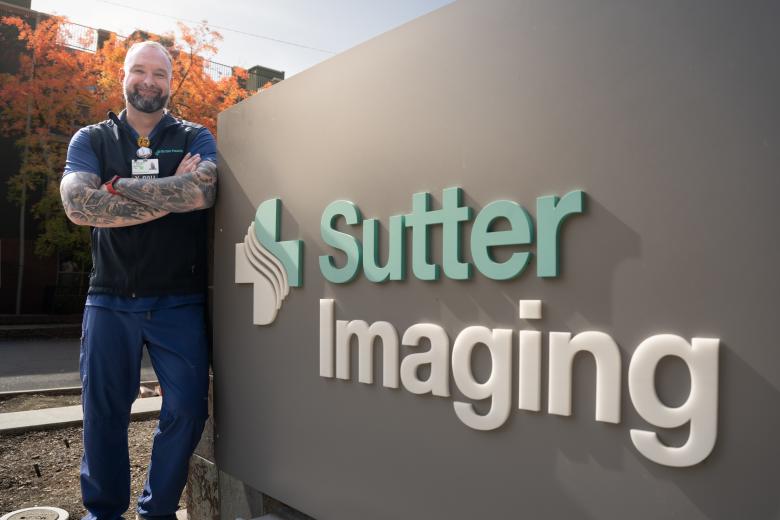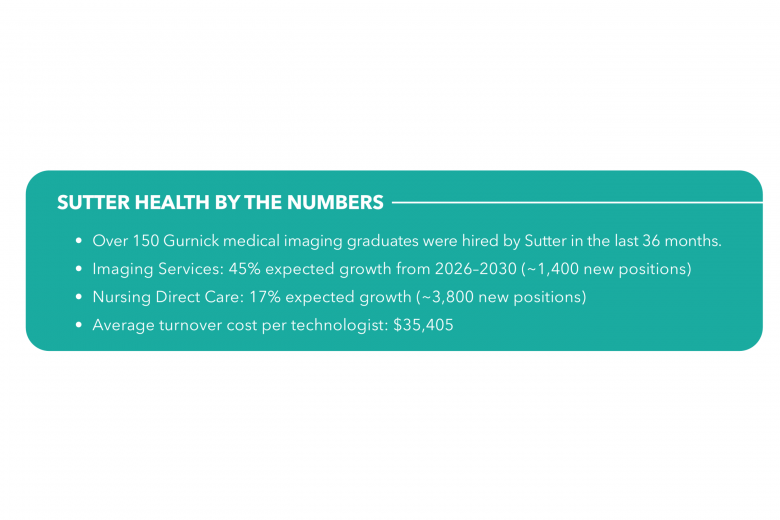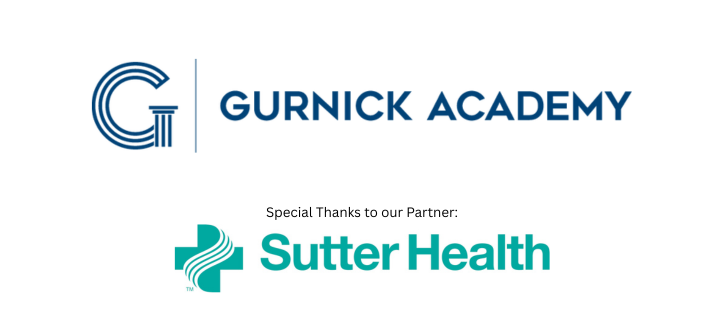In the face of a statewide technologist shortage, one collaboration is rewriting the future of health care talent. Across Northern California, not-for-profit Sutter Health and Gurnick Academy of Medical Arts are proving that collaboration — not competition — is the engine for a sustainable, community-focused health care workforce.
Collaboration: A Shared Commitment to Grow Talent
Sutter Health’s Academic Partnerships team is implementing a refreshed strategy that goes beyond student placements to build deeper collaborations with academic institutions. This approach ensures students gain the clinical training they need to enhance their skills and advance their careers, while also helping fill essential clinical roles across the organization.
“Collaborations like this create meaningful career pathways and help develop and prepare our workforce for the future of health care.”— Dr. Fozia Ferozali, Sutter Health
Led by Dr. Fozia Ferozali, Sutter’s system office director of academic partnerships and accredited continuing education, this approach marked more than a structural shift — it was a commitment to move from hiring talent to cultivating it.
“At Sutter, we’re focused on being the best place to work by helping our people grow and develop,” says Ferozali. “Collaborations like this one with Gurnick Academy help create meaningful career pathways and prepare our workforce for the future of health care.”
That vision found an ideal partner in Gurnick Academy of Medical Arts, a California-based health care college with programs spanning radiography, sonography, cardiovascular and vascular sonography, nuclear medicine, radiation therapy, nursing, MRI, mammography and CT. Together, the two organizations have built a model where Gurnick students learn and practice skills in real Sutter Health clinical environments — and the health care system gains a pipeline of highly trained graduates ready to step into critical roles.
Through the collaboration, Sutter employees and their dependents receive tuition discounts and existing x-ray technologists can enter targeted upskilling tracks into CT and mammography, both launched in October 2025 to fill urgent healthcare system needs. This Gurnick-supported “grow-our-own” model reduces recruitment pressure, increases retention and builds a more loyal, skilled and mission-aligned workforce.
Plan: A Blueprint for Workforce Resilience
Behind every successful collaboration lies transparency and trust. Joint planning sessions between Sutter and Gurnick integrate internal workforce projections, demographic data and clinical demand trends, allowing both organizations to co-design programs that are academically rigorous and operationally relevant.
By synchronizing curriculum design with real-time analytics, Sutter and Gurnick are anticipating need, not reacting to crisis.
According to Sutter’s internal benchmarking, Gurnick is the system’s no. 1 imaging student partner statewide — a distinction based on the number of student placements provided, consistent graduate performance, program quality and responsiveness to Sutter’s evolving requirements.
“This type of relationship between colleges and healthcare systems should be the norm and not the exception.”— Burke Malin, COO, Gurnick Academy
“This type of relationship between colleges and healthcare systems should be the norm, not the exception,” says Burke Malin, COO of Gurnick Academy. “It requires transparency, academic excellence and the will to solve workforce gaps creatively and together.”
For students, that planning means access to accelerated degree routes, hybrid learning options and guaranteed clinical placements in some of California’s most respected health systems. For Sutter, it means fewer bottlenecks, faster onboarding and a culture of continuous advancement.
Perform: Real Results, Real Impact
The impact is measurable — and deeply human. Over the past 36 months, more than 150 Gurnick graduates have transitioned directly into full-time roles within Sutter hospitals and outpatient centers. They enter these positions already aligned with Sutter’s systems, standards and culture, accelerating productivity and improving patient outcomes from day one.
Communities once constrained by limited imaging capacity are now seeing faster access to diagnostics, while employees benefit from clear, supported career ladders that reward skill development and loyalty.
This success has also inspired broader initiatives, including a recently launched internal upskilling program for existing Sutter technologists in CT and mammography. Alliances like this between Sutter and Gurnick underscore a commitment to creating growth and development opportunities at every level in the organization, making Sutter one of the best places to work, practice and receive care.
A Model for Academic Health Care Partnerships
As health systems nationwide wrestle with chronic shortages, the Sutter–Gurnick collaboration offers a tested playbook: Collaborate intentionally. Plan strategically. Perform collectively. By aligning educational excellence with real workforce demand, both institutions prove that sustainable health care delivery depends on continuous investment in people. The relationship is more than a response to a labor crisis — it’s a commitment to the long-term vitality of California’s health care ecosystem.







